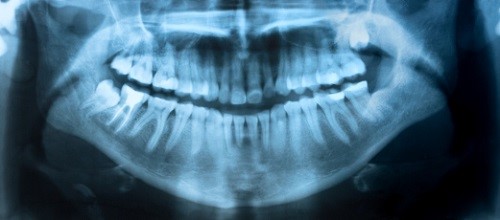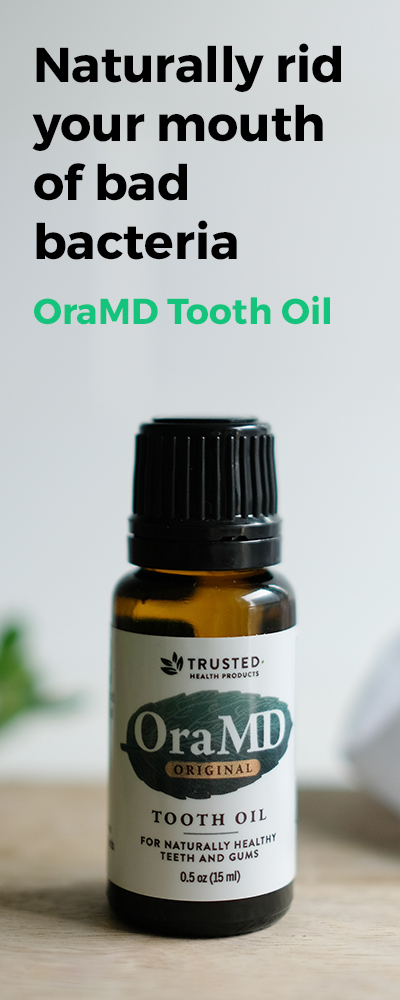Contents

What Is Gum Disease?
Gum disease occurs when dental plaque is not regularly removed, and begins to irritate the gums. This plaque is made from many types of bacteria in the mouth, and when these bacteria feed off of sugars and food particles in the mouth they produce waste that is toxic to the gum tissue. If the proper measures are not taken, these bacteria spread below the gum line and lead to more serious complications as they can eventually destroy the supporting bone structure that holds teeth in place.
Signs Of Gum Disease
Gum disease is fairly simple to acknowledge, as its warning signs can be identified visibly. Some of the changes you may notice more easily are:
- Gums that bleed
- Gums change from bright pink to dark red
- Gums that are sensitive to touch
- Mouth ulcers
- Gums that are swollen and tender
- Gums that have a shiny texture
If you’re noticing any of these symptoms and fear that you have gum disease, the most imperative action to take is to review your daily oral hygiene practices to make sure that it covers all the necessary bases for treating gum disease. The majority of cases are due to oral bacteria that are left to flourish by neglect in dental care. The good news is that if you have the correct plan and tools at your disposal, gum disease can be easy to treat in the early stages.
Progression Of Gum Disease
| • Pink and healthy in color • No bleeding • No swelling | • Swelling begins • Gums bleed • Red discoloration • Sensitive to touch | •Gums recede • Teeth loosen | • Halitosis • Pockets filled with pus • Loss of teeth |
Dangers Of Gum Disease
If action is not taken during the early stages of gum disease, it can lead to a number of other, much more serious conditions such as:
- Periodontal disease
- Oral infection
- Loss of teeth
- Abscesses
- Trench mouth (Acute Necrotizing Ulcerative Gingivitis)
All of the above mentioned conditions are quite serious in their own right, but they can easily be prevented if the first warning signs are noticed early enough. Not only to be considered are the time lost, and pain endured by these severe conditions, but the cost. Advanced dental procedures that are needed to correct severe cases can cost hundreds, if not thousands of dollars to have performed.
What Causes Gum Disease?
We’ve discussed how gum disease is primarily caused by the buildup of harmful oral bacteria. However, it is not bacteria alone that cause this. The real culprit lies in oral hygiene, or rather, the lack thereof. No matter what you do, there will always be bacteria in the mouth. Quite literally thousands of types are constantly being produced. The problem is not these bacteria themselves, but that lack of proper oral hygiene will allow these bacteria to bond with food particles and sugars in the mouth and form the whitish, sticky substance known as plaque.
Plaque will eventually calcify (harden) and become tartar, which can only then be removed by your dentist. As plaque forms and hardens, the bacteria contained within produce waste that is toxic to your mouth. This is what leads to various oral infections.
How To Prevent Gum Disease
There are two very simple steps to preventing gum disease:
- Controlling your diet
- Maintaining proper oral hygiene
A majority of the commonly available foods these days contain a plethora of sugars, preservatives, and various other artificial ingredients. These are the ideal diet not for you, but for the bacteria present in your mouth. Without the power to delegate what ingredients go into your food, it’s best to do what you can in this scenario and focus more on preventative care. The mouth is the gateway to the body, and the best method to keeping it clean and healthy is to be sure that you:
- Brush at the very least, twice a day- morning and evening (preferably after each meal)
- Floss at least once a day to remove food particles from between teeth
- Use an antibacterial mouthwash twice a day to make sure you get to all the spots your brush cant reach
Treatment Of Gum Disease
If you’ve noticed some of the above symptoms and signs, and are concerned that you may have gum disease, then you need to carefully examine your oral hygiene practices. Make sure that you’re hitting all the important areas that we outlined above- brushing, rinsing, and flossing. These are all crucial steps in the fight against gum disease.
Problems With Current Products
If you’re following an oral care plan like we outlined above and still suffering from symptoms of gum disease, the problem may be lurking in your very own medicine cabinet. A number of commercially available products for dental care today can create a vicious circle when it comes to treating gum disease. Many of the products on the store shelves may initially do just what they say, but leave you in a position where you can see no improvement whatsoever, or even worse, a decline in oral health. This may seem quite staggering, but consider all the prescription medications out there today that help one condition while also presenting a number of other side effects.
Toothpaste
Most toothpastes that are found in stores contain a number of chemical agents that while good in theory, are terrible in execution. Take sodium lauryl sulfate (SLS) for example. SLS is a detergent that is used in toothpaste to make it foam. When this happens, you think that it’s foaming up to reach all the areas in and around your mouth to clean them. While this may be true, SLS is a clinical skin irritant that has been proven to weaken the tissues of the mouth, and in many cases, even cause canker sores and mouth ulcers. Additionally, in being a detergent it also has a drying effect in the mouth. Because of this, there is less saliva- and when saliva is absent, so is your mouths natural bacteria fighter and cleanser.
The majorities of toothpastes on the market today also contain fluoride; even tout it as a major accomplishment in preventative dental care. While most of us have grown up hearing and believing this, it is simply not true. Did you know that fluoride is the active ingredient in numerous poisons and insecticides? That it is a byproduct of fertilizer and heavy metal manufacturing? That it was an integral part in developing nuclear weapons? While those facts carry a massive amount of weight on their own, it doesn’t mean much regarding oral health directly. Well, how about the fact that fluoride destroys cells in tendons and ligaments- specifically the ones that attach the gums to the teeth? Since this is a major issue regarding gum disease, it should be carefully considered if you already have pockets in the gums caused by bacteria and plaque. If this is the case, using a toothpaste with fluoride could actually prevent the pockets from ever healing.
Mouthwash
Most mouthwash uses alcohol as its active ingredient to kill germs. You can’t quite fault the manufacturers for this claim, because alcohol will definitely kill germs. In fact, it kills everything; even your mouths ability to produce saliva. Alcohol has a drying effect in any capacity that it is used in. What this means as far as mouthwash goes is that while it may kill bacteria, it also dries the mouth- and as we’ve previously mentioned, these bacteria thrive in an environment without oxygen and without saliva. Essentially, most mouthwashes will instantly cause bacteria population to skyrocket.
What To Do About It
As we’ve discussed, the most important thing to do to correct gum disease before it is too far gone is to implement a solid oral hygiene program. If you’re already doing that and still suffering, it may very well be due to the chemical laden products you’re using. Combining good oral hygiene with a natural product that will eliminate the bacteria which cause the problems may be the answer to a number of these problems.
Did it you know that the least expensive and painful option might be found in nature? Why not try a great product that provides natural relief?


